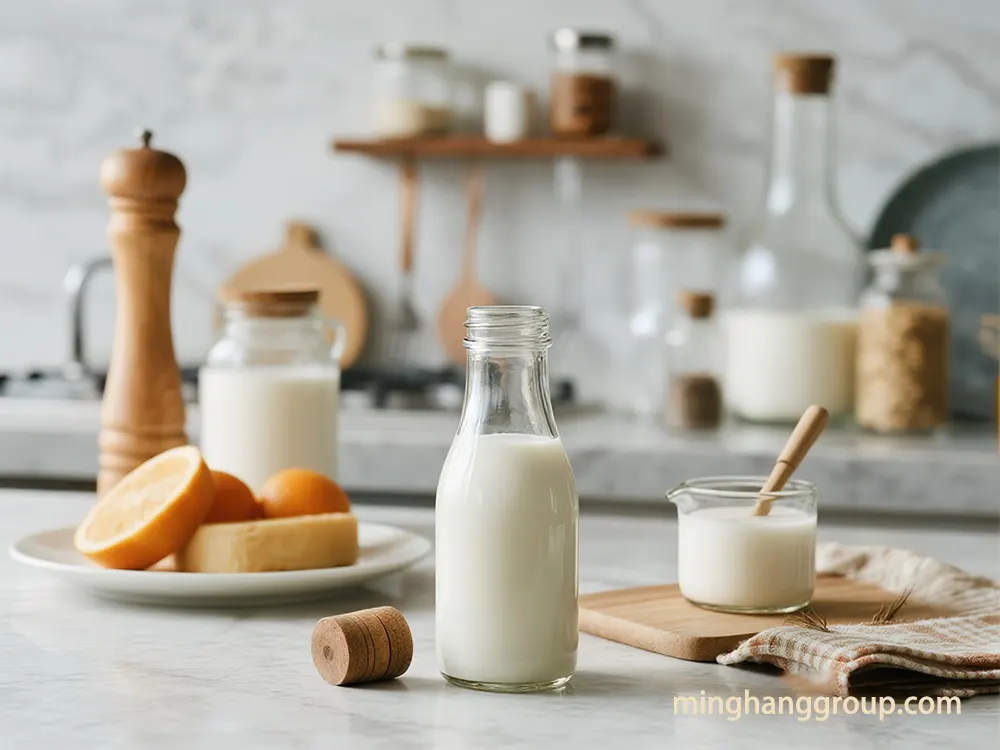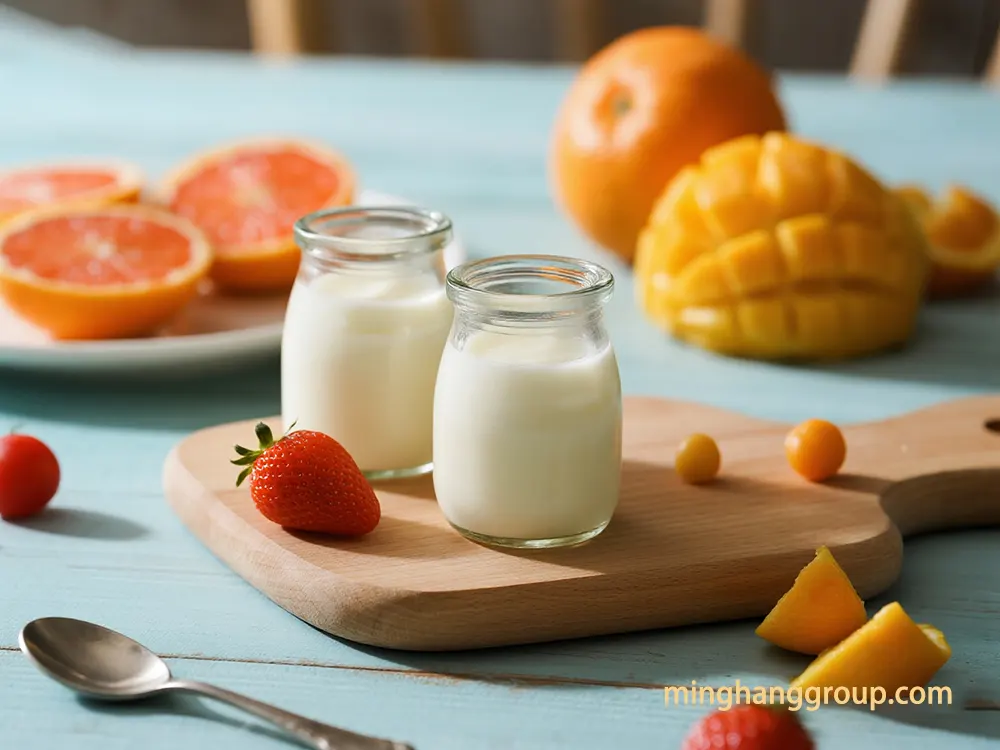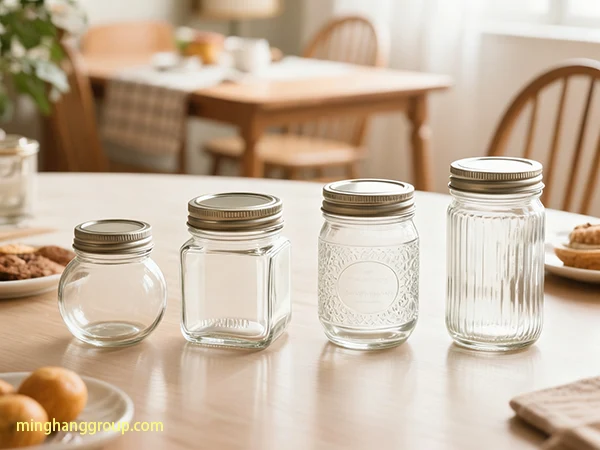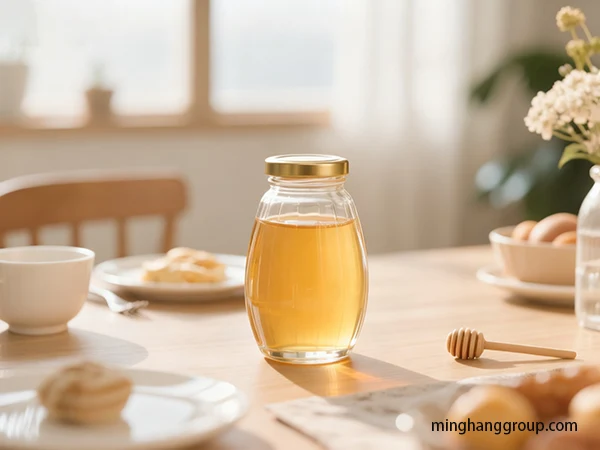1. Why Glass Jars Are More Than Just Containers for Food & Beverage Brands
The dynamic between the food and beverage (F&B) brands and the glass mason jars factories is an essential alliance, founded on mutual commitments to product integrity, consumer trust, and market differentiation. Glass packaging, in particular, the multi-purpose mason jar, is instrumental in protecting the quality, prolonging the shelf life, and raising the market perception. By doing so, it makes glass jar factories the closest accomplices without whom they would not be able to provide the essence of F&B product success. Glass’s natural attributes, when coupled with cutting-edge manufacturing, thus these factories can be seen as the main drivers behind the brands’ decisions to go for sustainability and still keep up with the excellence trend.
2. Inside a Glass Mason Jars Factory: How Quality Packaging Keeps Food Fresh & Brands Shining
Handcrafted glass jars offer unmatched benefits not only in product preservation but also in brand enhancement. Thanks to their singular material characteristics, glass-stored food and drinks remain of the original quality, with the taste and even the nutritional value being retained, while on the other hand, the brand gets a phenomenal elevation in perception and trust from the consumers due to the visual appeal.
2.1. How Glass Mason Jars Factories Ensure Superior Product Integrity and Safety
Glass, being a chemically inert material, does not allow the release of harmful substances such as BPA, phthalates, or microplastics even under conditions of heat or acidity into the contents. The non-reactive characteristic of glass retains the flavor, the smell, the purity, and even the nutrition, thus, it is the perfect packaging for liquids like juices, and sauces, and food specially made for babies. The U.S. FDA classifies glass as “Generally Recognized As Safe” (GRAS) for food storage, which is a unique recognition. A 2022 publication in Critical Reviews in Food Science and Nutrition identified glass as the safest material for food contact with the fewest chemical emissions detected.
Glass also has excellent barrier properties, thus it is totally impervious to oxygen, CO2, moisture, and other gases, and this is very important in that it prevents and/or slows down the process of spoilage and degradation. Due to its impermeability shelf life is extended; a case in point is that glass bottles are the main reason for beer shelf life going from 4 to 13 months. Because of glass, which resists high temperatures very well, pasteurization, and hot-filling, are possible, which in turn are very important for killing bacteria and extending shelf life.
In addition, amber or green glass is a sort of sunscreen for oils, beers, and dairy products being able to protect them from UV light, which in turn ensures that the color, the flavor, and even the nutrients are retained. It is worth mentioning here that the amber glass is FDA-approved GRAS and it is very efficient in blocking UV rays.
2.2. Enhanced Brand Equity and Premium Positioning
One of the inherent qualities of glass packaging is that it is able to communicate not only the quality but also the sophistication and the luxury of the product that is contained in it, thus, the perceived value of the product is raised considerably. We can see this very clearly in expensive product categories like that of fine wines, craft spirits, and gourmet foods. The transparency feature of glass allows for the visual inspection of the product, thus, the latter becomes more appealing and trustworthy. Some of the physical characteristics of glass such as “heft” and “cool to the touch” are some of the ways by which glass is able to give a consumer a premium sensory experience and consequently, influence a purchase.
Consumer surveys have always revealed that people prefer glass packaging. Friends of Glass discovered that 85% of Europeans are promoters of glass, while 53% of them consider it the safest food packaging. The 2023 EcoFocus survey showed that 70% of consumers think that food can be safely stored in glass containers, while 65% trust products packed in glass more. The trust that people exhibit thereby gives brands the opportunity to charge more for their products. According to Mintel (2025), 72% of consumers connect premium packaging with better quality, and 58% confess that they are willing to pay more for luxurious and eco-friendly packaging.
Besides quality, one of the most important factors that come into play is the attractiveness of a product and the ability to build “iconic identity” through unique designs, embossing, and custom closures which are the elements that packaging as a “brand ambassador” heavily relies on. This makes the products distinguishable from one another in the crowded market and it also helps in communicating the brand story.
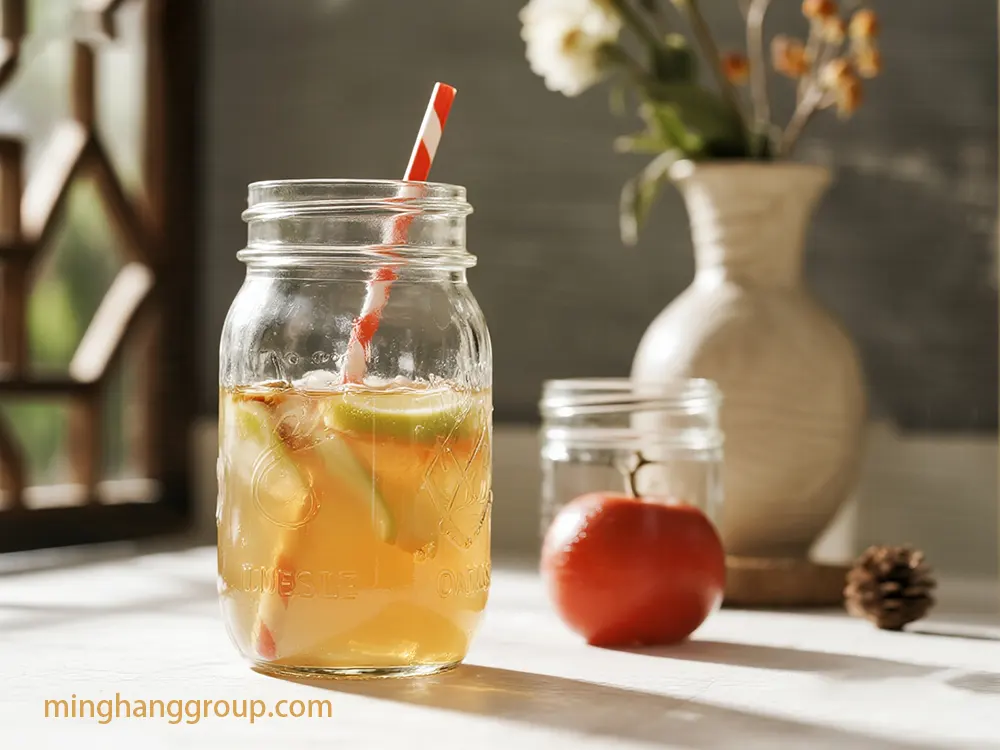
3. Green & Clean: How Glass Jars Boost Sustainability Goals
One of the main reasons to back up glass packaging is its environmental benefits which are basically the core of the appeal. Such advantages help brands to mitigate the sustainability mandates and attract eco-conscious consumers. Glass jar factories are essential in producing the highly recyclable, reusable, and inert containers that pave the way for a circular economy.
3.1. The Environmental Imperative of Glass Packaging
Glass is the most sustainable packaging material ever made as it is 100% and indefinitely recyclable without any downgrading in quality. This is the reason why it is the preferred one for brands that are serious about carbon footprint reduction and are in zero-waste lifestyle alignment stance. The average collection rate of glass in Europe is 80%, which is the highest of all packaging materials, the target being 90% by 2030. The revised EU packaging waste directive sets the recycling rates at 70% by 2025 and 75% by 2030. Closed-loop recycling of glass constituted 91% of total recycled glass packaging in 2019.
Every time recycled glass (cullet) is used in a new glass production, a step towards energy savings is made; energy consumption goes down by 2.5-3% for every 10% of cullet used. Besides energy savings, there are huge GHG emissions reductions made as well with every ton of recycled glass saving approximately 580kg of CO2. A 5% GHG reduction is achieved for each 10% of glass recycled in the furnace.
3.2. Reusability and Circular Economy Initiatives
After being forgotten and overshadowed by commercialization, glass has now been acknowledged for its high reuse value which is a very important aspect of sustainability packaging and is gaining momentum rapidly in the F&B sector. Environmentally, reuse of glass bottles on a 1:3 basis with aluminum cans and PET bottles is the minimum to be comparable. Many brands use in-store refill solutions as one of the ways to brand promotion and at the same time reutilization of glass packaging.
Several efforts made by the industry contribute to the realisation of glass circularity goals on a large scale. “Close the Glass Loop,” is a European partnership led by FEVE, bringing together the entire glass packaging collection and recycling value chain. The ambition is the achievement of 90% collection rate in the EU by 2030 and getting recycled glass of better quality for bottle-to-bottle production. This means the optimization of collecting, sorting, and recycling processes for closed-loop recycling.
3.3. Lightweighting Innovations
Glass jar factories are always looking for ways to reduce the environmental impacts of their products by means of lightweighting. The average glass container now weighs 30% less than those of 50 years ago, and this reduction alone accounts for over 70% less CO2 emissions associated with production. One of these technologies is Vetropack’s Echovai, which returns consumable tempered lightweight glass bottles, almost a third less in weight but more than double the strength, thus potentially enabling up to 25% less carbon emissions for beer bottles and 20% more reuse cycles. Verallia’s Ecova program has put back the weight of the wine bottle and thus lessened the carbon emissions by 6%. The rise of the ultralight glass bottle market is largely due to the highly sophisticated techniques used in manufacturing such as the “narrow neck press and blow process” that are projected to grow to ~ $2.5 billion USD in 2025. Innovations in lightweighting not only reduce the use of raw materials and energy during production but also significantly reduce the impact of transportation.
4. Smooth Sailing: Reliable Supply Chains & Smart Economics
Packaging supply chain reliability and cost-effectiveness are F&B brands’ main concerns. Through glass jar factories and partnerships, brands can secure the supply of premium packaging and thus also their manufacturing efficiency, reduction of spoilage, and overall cost-effectiveness.
4.1. Ensuring a Reliable Supply Chain
Reliable supply chains are at the core of product availability for F&B brands. One of the most effective ways to achieve this is by partnering with those glass factories investing in stockholding and providing a solid base for the supply chain (e.g., 12,000-pallet capacity of Glassworks International). This not only assures the supply but also lessens the risks associated with fluctuations in production and prices.Therefore, rich-stock and-efficient-storage facilities must go hand in hand with well-managed inventories, including FIFO methods, correct storage, and automated tracking.
Lead times for standard glass packaging are between 6-15 weeks with a waiting period even longer for uniquely-designed ones.Factory relationships and continuous planning walk side by side in this case.
4.2. Manufacturing Efficiencies and Cost-Effectiveness
Currently, a glass filling line may be functional for a high-speed work protocol, in which 5,000-60,000 bottles/jars are filled per hour, depending on the capacity of the line.This is flexibility for a variety of products with great accuracy and almost no spillage, therefore, guaranteeing produced goods to be at the same level of consignments.Thus the main criteria for performance are represented by capacity, speed, minimal TPO, and stable CO2 levels alongside the overall equipment efficiency.
The point at issue is to make the minute part of breaking completely avoided.In such a manner, while the rate was at around 3% in 1940, as a result of transportation losses nowadays, it leads to roughly $4.7 billion worth of global damage each year.Precisely physical shocks, uneven packaging, and vibrations are blamed for the most part.Factories and brand worlds are jointly working on new packaging ideas such as custom-molded inserts that may decrease destruction by up to 37%.
One thorough Glass Total Cost of Ownership (TCO) study is basically a sum of direct expenses like those for materials, manufacturing, and shipping along with those hidden ones such as damaged inventory and regulatory compliance costs.Taking as an example that one unit of glass bottle packaging is worth of $0.6-$1.0, still, being a luxury item, this can allow brands to raise their prices for up to 30% by 15-30%.On the other hand, investments in custom molds can be significant while energy costs may account for almost one-third of the production of glass.
4.3. Regional Manufacturing and Supply Chain Resilience
Regional glass manufacturing indeed helps supply chain resilience by lessening the dependence on far-off suppliers.While the industry is still energy-consuming, it has managed to reduce its CO2 emissions per ton of glass by 69% during 1960-2010.A significant factor in the company’s decarbonization plan is increased cullet utilization, thus lowering the demand for virgin raw materials (e.g., AGC Glass Europe was using 730,000 tons of cullet in 2024).Besides the use of the alternatives for heating (biogas, electricity, hydrogen) and carbon capturing techniques, other decarbonization levers are also in place.
4.4. Contractual Stability and Food Safety
Formal partnership models such as the agreement between Boston Beer Corporation and Anchor Glass Container Corporation (2007) detail aspects of exclusive purchasing, quantities, pricing, and quality standards.With Prescribed Adjustment Clauses (PACs) thus, the negotiating parties also gain the opportunity to be more flexible as they can accept automatic adjustments based on external triggers such as commodity costs or inflation without the need for frequent renegotiations.
Supplier certification and traceability should be the first considerations when it comes to food safety. Good certification and constant auditing processes including material certificates and the chemical migration data have to always be present in the supplier’s documentation.The inherent stability of glass along with strong labeling features makes it very traceable and is in full compliance with UK and EU standards.
5. A Perfect Fit: Glass Jars for Every Food & Beverage Niche
Glass jar factories essentially are the creators of containers that are useable for an endless variety of F&B segments, starting from small-scale producers who want to attract customers with a luxurious look to large-scale brands that are more interested in product preservation and safety. By using customization, brands will be able to create such unique identities that will be able to resonate with the right target audience.
5.1. Customization for Brand Differentiation
The glass packaging is very flexible with respect to customization and thus can easily be used for brand differentiation. Some of the ways included bespoke shapes (e.g., hourglass, hexagonal), various capacities (10ml to 1-gallon), and a broad spectrum of colors (amber, green, cobalt blue, flint) with different levels of transparency.
The decorative finishing components like embossing, debossing, frosting, silk screening, and acid etching can be used not only to enhance the aesthetic aspect of the product but also the tactile one. In addition to that, the custom closures that comprise the textured caps, the engraved corks and the variety of lid materials, can become a very significant source of brand identity as well as a guarantee for product integrity.
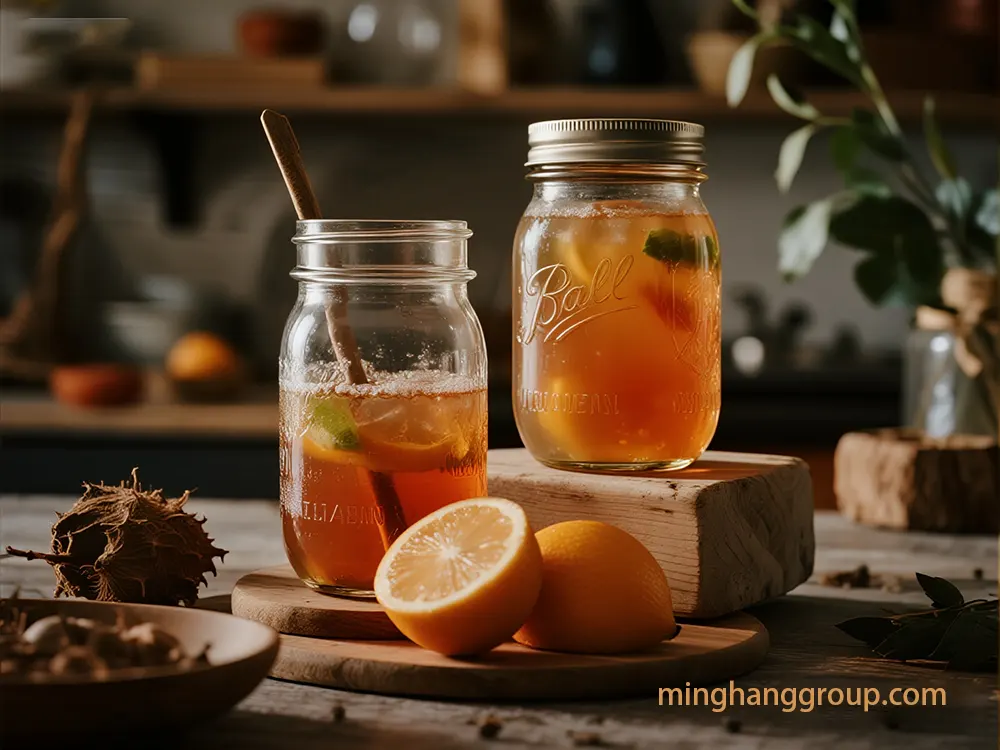
5.2. Strategic Importance of Unique Packaging
One of the main uses of custom glass packaging is a strategic influence on consumer perception and purchase decisions. Among the major effects are the creation of strong brand recall, improvement of premium perception, and enhancement of gifting value. The distinctive shapes and textures make a product very visible on the shelves.Iconic examples are Absolut Vodka and Tabasco Pepper Sauce. According to NielsenIQ (2023), 63% of consumers find distinctive packaging as one of the most persuasive factors for purchasing high-end F&B. The tactile qualities of glass attract the consumers’ trust, feeling of security, authenticity, and luxury, hence their willingness to purchase the product and brand loyalty increases.
5.3. Catering to Diverse Market Segments
Glass is the most preferred packaging material in the premium and specialty F&B sectors because of its inert properties that help in preserving the taste and the overall product integrity without any chemical reactions. The FDA’s GRAS designation is the ultimate guarantee of food safety.The examples are Yoplait’s Oui yogurt cultured in glass and Del Monte’s College Inn stock going back to glass.Brands such as Himalaya and Ritual employ glass packaging to not only convey their heritage but also gain the trust of the wellness consumers who are generally modern and well informed.
Moreover, glass is a very good barrier against oxygen, moisture, and light, which are major causes of food spoilage. This ensures not only the freshness of the food but also that its shelf life will be extended, which is of great importance for that kind of foods.
5.4. Manufacturing Flexibility and Expertise
Custom glass Minimum Order Quantities (MOQs) are different for each category and may range from 20,000 up to 500,000 pieces. However, Minghang, a few other suppliers, and a small amount of customers can hold smaller batches (6,000 units) for launches and niche markets and small glass jars with stock MOQs as low as 1,000 units for startups are also available.
Innovative glass packaging is usually tied with the involvement of a specialized design agency that is offering a complete package of services. A company like Saverglass has a special unit for custom-made bottles. Large modern companies use fully automated production lines and electric furnaces for the majority of their production, some even reaching 1.2 million units daily with the option for expansion up to 3 million units. The ability for quick prototyping is an essential capability of some companies, with several providing a 72-hour prototyping period for custom requests, thus factory-fillable products can be created in as short as 40 days if orders are large. The developing technology of “Liquid Glass” even enables the 3D printing of transparent fused silica glass for fast prototyping.
6. Why Glass Wins: Standing Strong Against Other Packaging
Despite the number of packaging alternatives, glass mason jars continue to have a distinct and a strategically important point of attraction over other options such as plastics, aluminum, and multi-layer cartons. This part of the article conveys the reasons why glass is still the ultimate pick of the most demanding F&B brands and the buyers.
6.1. Unrivaled Safety and Product Purity
One of the major differences that set glass apart from the others is its safe feature, and of course, the fact that it is inert. Glass is non-toxic, non-porous, and is made of a material that has no reaction with other substances, that is, even though the contact material is food, it does not release chemicals, microplastics, or heavy metals into the food. On the other hand, plastics give quite a different story, which release phthalates, BPA, PFAS, and flame retardants, in particular when they are heated or when acidic contents are present. These plastic chemicals have been linked to various health issues. One plastic microwaving event can emit as many as millions of microplastic particles.
The classification GRAS of the FDA for glass is a proof of its safety, which is not accorded to other commonly used packaging materials. Thus, glass is the best option for the likes of baby food, where 77% of European parents prefer glass, and 61% avoid plastic.
6.2. Premium Perception and Consumer Trust
When it comes to perception and trust from consumers, products packed in glass are the winners most of the time as compared to the other options. Consumers perceive packaged in glass as more premium, artisanal, and belonging to quality brands. Glass being transparent gives no chance to the product inside not to be seen and this helps in establishing confidence. The feeling to be touched by glass makes even more the idea of high quality to the consumers. Researches indicate that 74% of consumers link higher quality with glass, and a good number of them do not hesitate to pay a higher price for it. This strong preference is converted into brand equity and consumer loyalty brand.As a result, any company producing in plastic will come under increasing pressure to prove the safety of its products when examples of chemical leaching and microplastic pollution proliferate. This lack of confidence in plastic has turned producing glass into a winning strategy for brands that care about health, safety, and transparency.
6.3. Environmental Superiority in a Circular Economy
The debate about the environmental impact of PET plastic bottles versus glass bottles is still unresolved as some LCA studies argue that PET could be better than glass from certain perspectives due to the heavier weight and higher-energy production of glass. However, the long-term impact of glass can be more positive because it has the potential to be recycled indefinitely and can be reused in many ways. Glass is a 100% recyclable material and can be recycled indefinitely without any loss of quality, thus making it a permanent material perfect for a circular economy. The average collection rate for glass across Europe is 80%, which is the highest among packaging materials.
Using recycled glass (cullet) results in lowering of energy consumption and CO2 emissions. Besides, glass has great potential for reuse, hence, reusable glass bottles will be environmental-friendly after three reuses, compared to aluminum cans and PET bottles. The “Close the Glass Loop” project sets a target for a 90% collection rate in the EU by 2030.
On the other hand, plastic recycling rates are much lower (e.g., 20.3% for PET bottles), and plastics cannot be recycled indefinitely without their quality being lowered. Plastics are not biodegradable and eventually become harmful microplastic. Although aluminum cans have good recycling rates (73%), they are not totally inert and can be affected by certain types of contents.
6.4. Functional Versatility and Durability
Glass is a material with high plastic potential. It can be used to package food products and drinks of all kinds. Its strength is a good protection against the breaking of the container and the spilling of the contents. At the same time, it is capable of being closed with a variety of closures. Glass can endure high temperatures and therefore is the best solution for products to be pasteurized, sterilized, or kept for long periods. The sturdiness of the container allows for the product to be safe and kept fresh. The best quality glass has no match when it comes to thermal versatility, it can safely be moved from the fridge/freezer to the oven/microwave, this is something that plastic cannot do because of the danger of leaching.
7. The Road Ahead: Innovations & Challenges in Glass Packaging
The evolution of the glass packaging industry is evident through the new demands it meets for consumer engagement, efficiency, and sustainability. While innovations are driving the industry to new heights, there are still severe issues that need a strategic approach and solutions borne of collaboration.
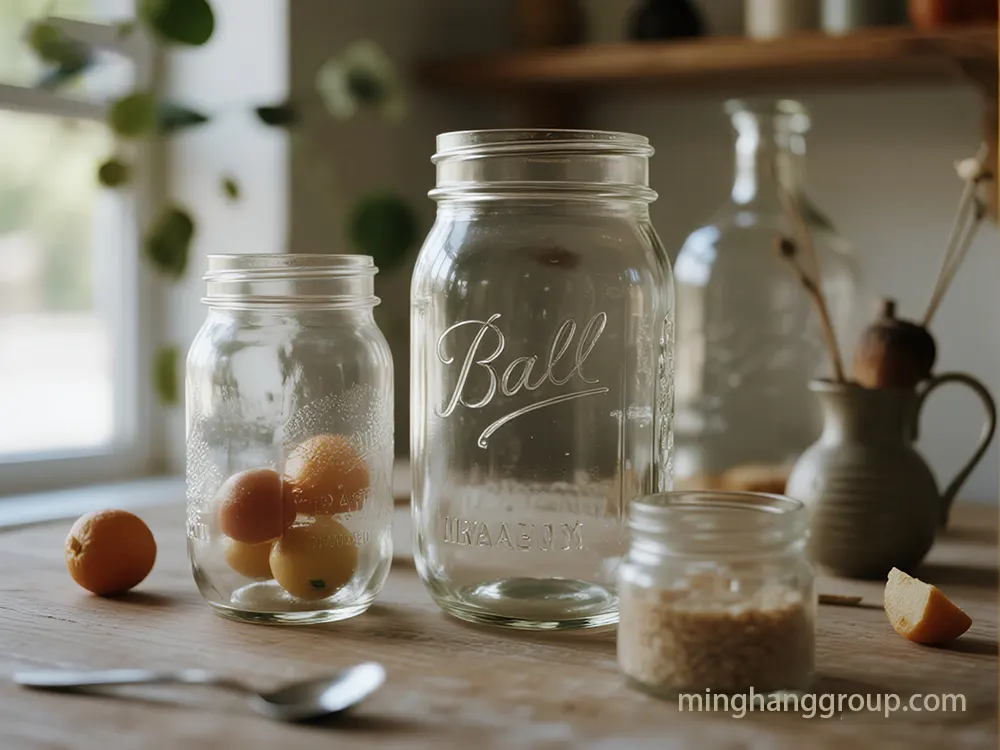
7.1. Innovations in Glass Packaging
- Advanced Lightweighting: The technology utilized by the companies Vetropack and Verallia reduces the weight of the bottle even by one-third, therefore it increases the strength, lowers carbon emissions, and hikes the reuse cycles. The market for ultralight glass bottles is expected to grow considerably.
- Surface Treatments for Enhanced Durability and Safety:The new treatments change the glass features. For example, safety-coated glass (e.g., PVC, plastisol) is more resistant to chemicals, durable, and provides better grip, besides being able to prevent the scattering of fragments in case of breaking. ShatterSafe coatings are fully recyclable. Besides, the developers are also working on antimicrobial coatings.
- Smart Packaging Integration:With the help of smart technologies, the glass packaging can become an interactive platform. The use of QR codes, NFC tags, RFID, AR, and smart sensors makes it possible for interactive labels to link to recipes, brand stories, and promotions, thus attracting more consumers. With the help of NFC tags, it is possible to keep the goods under real-time surveillance and authentication. IoT sensors can be used to monitor the conditions of the transport, while thermochromatic inks can indicate the serving temperature.
- Sustainable Manufacturing Processes:Glass industry is trying to implement very ambitious and expensive measures to produce in a sustainable manner and achieve climate-neutral production by 2050. Among the changes are electric melting technology (e.g., Fives Group’s Prium E-Melt, which can reduce CO2 emission by 60%) and hybrid furnaces. There is also a strong commitment to increasing cullet use, as this helps to bring down the energy required for melting by nearly 30%.
- AI and Machine Learning in Production: Arglass uses AI and machine learning not only for quality and sustainability but also for identifying trends in real-time and thus preventing defects, which ultimately leads to higher efficiency and less waste.
7.2. Challenges in Glass Packaging
- Energy Costs and Raw Material Volatility:The biggest problem for this industry is the soaring energy costs (10-20 times the usual prices) and the price volatility of raw materials, both of which have the effect of increasing the expenses of production and making the supply chain less stable.
- Competition from Alternative Packaging: The rivals for PET, aluminum, and biodegradable plastics are aggressively fighting for the market. PET has the advantage of being lighter (8-10 times) and having a lower carbon footprint in some LCA categories.
- Fragility of Lightweight Glass: While it is true that lightweighting has positive effects, it may also increase the chances of glass breaking whereby designing and handling need to be performed cautiously.
- Regulatory Complexity: The regulations governing the safety of food contact materials vary from place to place and are not in harmony, thus posing a challenge to manufacturers working in different regions.
7.3. Proactive Solutions and Anticipated Needs
Several solutions have been proposed to deal with the problems and firm up the partnership:
- Harmonized Global Regulations: For the enforcement of consistent and strict standards, a collaborative effort is needed among different countries to set standards for food contact materials, particularly plastics, so that it would be less complicated to comply and safer.
- Investment in Advanced Glass Technologies:It is very important to keep funding R&D on glass that is stronger, lighter, and produced with less energy consumption, with the inclusion of advanced surface treatments and tempering, if a company or industry wants to stay in business and have less impact on the environment.
- Enhanced Circularity Infrastructure: It is a prerequisite to the achievement of recycling goals and the support of projects such as “Close the Glass Loop” to have further investments in glass collection, sorting, and recycling infrastructures along with the maximum use of the cullet.
- Transparent Labeling and Consumer Education: Transparent and uniform labels that inform about the safety aspects and environmental benefits of glass, the correct way of discarding it, as well as giving information about the risks of other materials will be an education tool for the consumers.
- Strategic Partnerships and Collaboration:The collaboration between F&B brands and glass factories can be at a higher level if they share their forecast information, co-develop solutions, and implement flexible contracts so as to be able to handle market volatility.
- Digital Transformation: Through the use of AI, machine learning, and IoT in activities such as predictive maintenance, quality control, and supply chain management there will be an improvement in the efficiency and resilience of the business.
8. The Indispensable Jar: Solidifying the Partnership
Glass packaging innovations and their various benefits clearly position glass mason jar factories as essential and strategically valuable partners that contribute to the success and longevity of F&B brands. Glass has a unique value proposition that no other packaging material can match, thus it is the one that safeguards product integrity, enhances brand appeal, drives sustainability, and assures supply chain resilience.
One of the most important hallmark characteristics of glass is its chemical inertness, which in turn guarantees product purity and consumer safety. Such attributes are very critical in an era where consumers are becoming more health-conscious and are skeptical of plastics. Besides, it is a premium product which enhances brand perception and thus consumers are willing to pay higher prices and become more loyal. Moreover, glass is an eternal recycling material and at the same time, it has a high potential for reuse, and the industry’s relentless efforts in reducing weight and making sustainable products place it as a leader from an environmental point of view.
In a nutshell, F&B brands through the existence of reliable supply chains, efficient high-speed filling lines, risk identification and minimization can run their businesses smoothly and in a cost-effective manner. The vast customization possibilities, on the other hand, empower brands to create distinctive market segments, design packaging that become consumers’ favorites, and thereby attract them significantly.
Innovations in light-weighting, surface treatments, smart packaging, and environmentally friendly manufacturing processes will, as a matter of fact, keep glass ahead of the competition in future. Although there are obstacles such as energy costs and competition, the strategic collaboration between F&B brands and glass mason jar factories including Minghang, is still very strong and it will continue to develop and bear fruit in the future, quality, safety, and a sustainable future being the shared commitments. The indispensable glass jar remains one of the cornerstones of the food and beverage industry.

